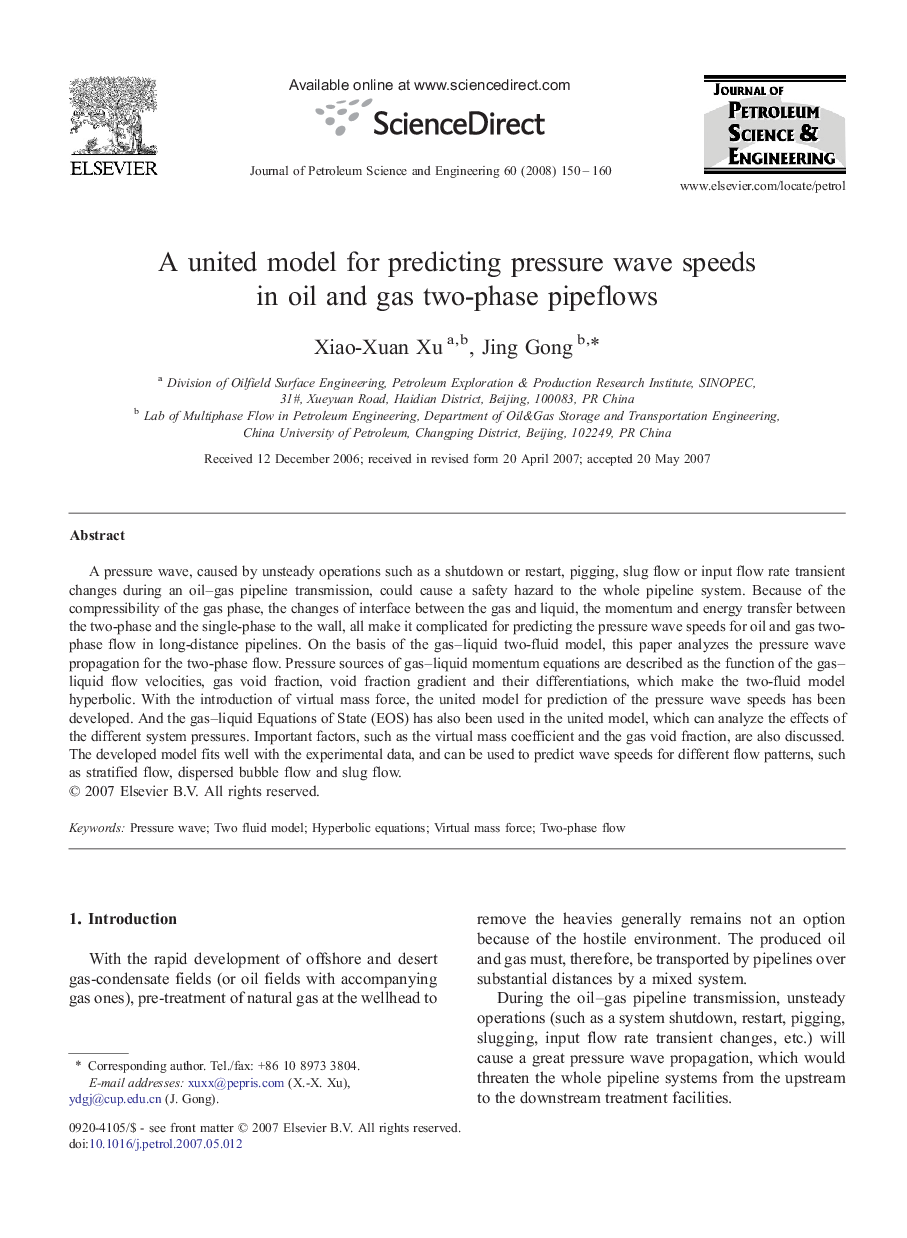| Article ID | Journal | Published Year | Pages | File Type |
|---|---|---|---|---|
| 1756139 | Journal of Petroleum Science and Engineering | 2008 | 11 Pages |
A pressure wave, caused by unsteady operations such as a shutdown or restart, pigging, slug flow or input flow rate transient changes during an oil–gas pipeline transmission, could cause a safety hazard to the whole pipeline system. Because of the compressibility of the gas phase, the changes of interface between the gas and liquid, the momentum and energy transfer between the two-phase and the single-phase to the wall, all make it complicated for predicting the pressure wave speeds for oil and gas two-phase flow in long-distance pipelines. On the basis of the gas–liquid two-fluid model, this paper analyzes the pressure wave propagation for the two-phase flow. Pressure sources of gas–liquid momentum equations are described as the function of the gas–liquid flow velocities, gas void fraction, void fraction gradient and their differentiations, which make the two-fluid model hyperbolic. With the introduction of virtual mass force, the united model for prediction of the pressure wave speeds has been developed. And the gas–liquid Equations of State (EOS) has also been used in the united model, which can analyze the effects of the different system pressures. Important factors, such as the virtual mass coefficient and the gas void fraction, are also discussed. The developed model fits well with the experimental data, and can be used to predict wave speeds for different flow patterns, such as stratified flow, dispersed bubble flow and slug flow.
